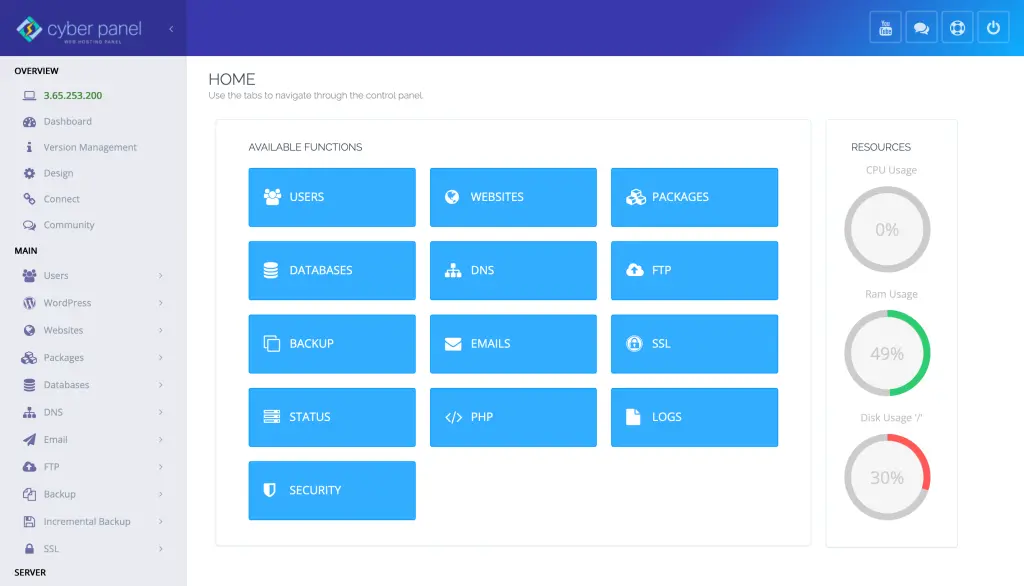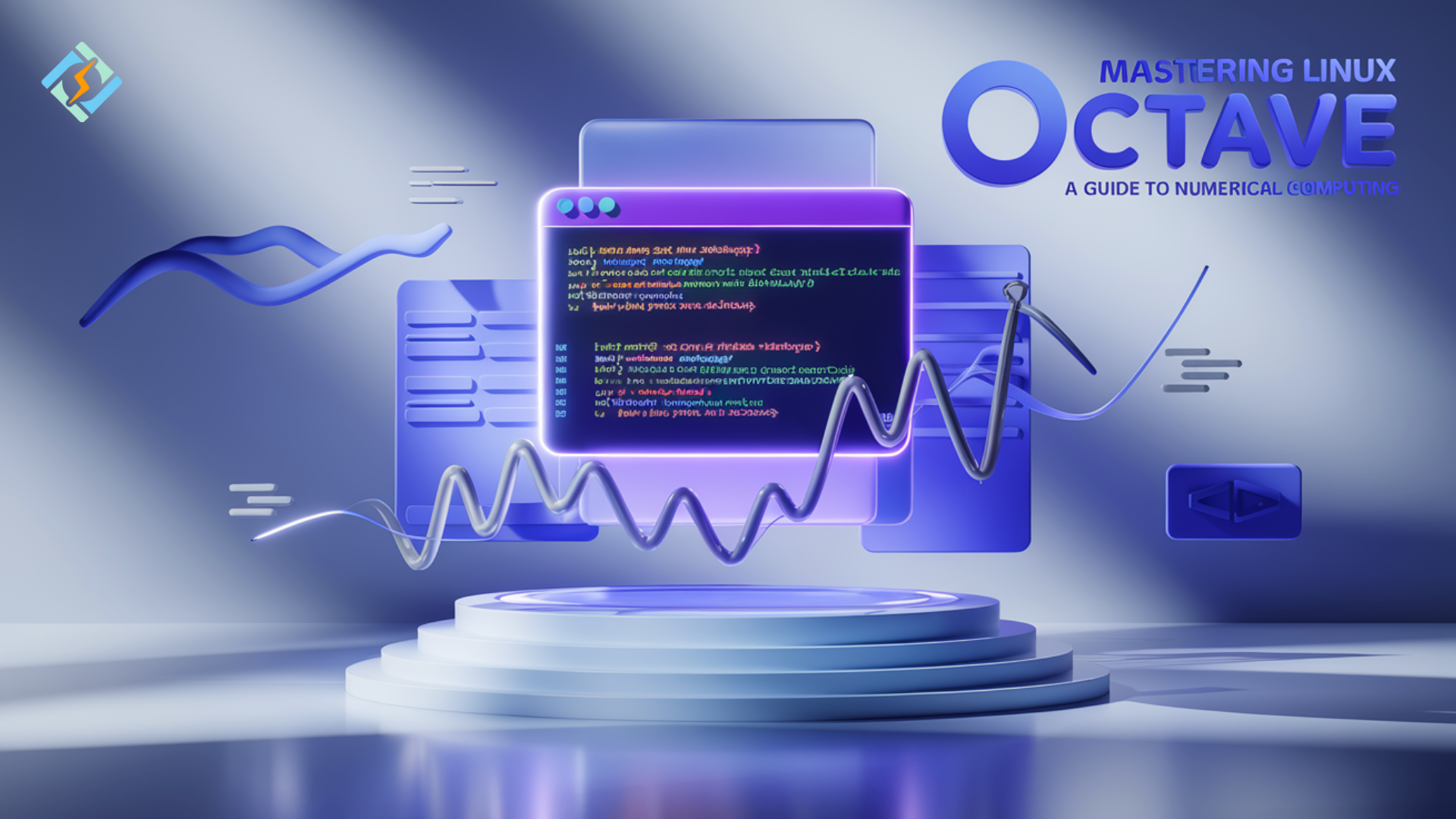What if I told you that you could run your numerical simulations, signal processing workflows, or scientific computations without having to pay for the license while still having access to the rich MATLAB worlds? Linux Octave makes that dream come true. Being an open-source MATLAB clone, Octave equips a user with an IDE, plotting tools, script compatibility, and toolboxes, all bundled in a package that is ready for Linux users.
This guide will help you install Octave on Linux in several ways, including downloading with the package manager and compiling from the latest source. Then, we’ll demonstrate how to utilize the Linux Octave GUI and provide you with common troubleshoot and best practice guidelines so that you can have a trouble-free experience. If you have multiple servers under your control, you will love how CyberPanel allows you to set up Octave automatically to use it in classroom labs or compute appliances. We’ll also answer the most asked questions for you so that you can jump into Octave with confidence and get to work on real-world problems cost-free.
After finishing this article, the knowledge you have gained will help you install, run, and control Octave on Linux with no difficulties while being ready to embark on your journey of data analysis, machine learning research, or solving engineering problems.
What Exactly is Linux Octave And Why Choose it?
Linux Octave is the open-source project led by GNU that aims to develop a math engine for MATLAB. The features it offers include scriptable numerical computations, data visualization, linear algebra, and many others. It is free, community-driven, runs on Linux, and supports most MATLAB code—thus it is perfect for students, researchers, and engineers.
How to Install Octave in Linux Using Package Managers?
To install Octave on Linux, you can use the package manager of your distribution to do it quickly. In Ubuntu or Debian execute sudo apt install octave. Fedora: sudo dnf install octave. This gives you Octave along with the GUI and basic toolboxes to start immediately.
Example (Ubuntu 22.04):
sudo apt update
sudo apt install octave gnuplot
octave --version
Output:
Get exclusive access to all things tech-savvy, and be the first to receive
the latest updates directly in your inbox.
GNU Octave, version 6.4.0
How to Install Octave on Linux From Source?
For the latest features or custom builds, compile Octave from source. Download its tarball, prepare dependencies, then run ./configure, make, and sudo make install to build a system-wide installation.
Steps:
sudo apt build-dep octave
wget https://ftp.gnu.org/gnu/octave/octave-7.3.0.tar.gz
tar xzf octave-7.3.0.tar.gz && cd octave-7.3.0
./configure
make -j$(nproc)
sudo make install
Output:
Installation complete; octave is now available system-wide.
How to Launch the Linux Octave GUI?
The Linux Octave GUI provides an integrated development environment with an editor, interactive console, and plot viewer. Once installed, launch it with the command octave --gui in a terminal.
GUI launch:
octave --gui
What to Do When Octave Installation or GUI Fails?
| Problem | Cause | Solution |
|---|---|---|
| “octave: command not found” | Install failed or path missing | Reinstall via package manager or run sudo make install |
| GUI won’t launch | Missing GUI dependencies | sudo apt install qt5-default libqt5opengl5-dev gnuplot-x11 |
| Errors building from source | Missing -dev libraries | sudo apt build-dep octave before ./configure |
| Plot windows freeze | No X11 forwarding for remote GUI | Use ssh -X or run octave --no-gui instead |
| Outdated Octave version | Repos are behind latest release | Use PPA or install from source |
Best Practices for Using Linux Octave
- Try using the Octave GUI to do the initial design, then save the work in .m files for sharing.
- Keep toolboxes neat and clean: do pkg install -forge in Octave.
- Accelerate installations by employing shell scripts or Docker containers.
- Also, consider the use of Git as a version control system for script dirs.
- Make use of logging and profiling features in Octave for debugging the performance of your code.
How Can CyberPanel Help Manage Octave on Linux Servers?

In the first place, a web hosting control panel, CyberPanel is good at handling server-side deployments:
- From its terminal or via cron jobs, the running of Octave installation scripts can be automated.
- Jupyter notebooks or web interfaces can be hosted for Octave analysis.
- Managing user access and SSL for Octave-based web apps is one of the features.
- Take advantage of its UI to get the latest versions or remove the older ones.
- Good for universities or labs that have to spread Octave jobs across compute nodes.
By changing the way Octave servers are from manual installations to centrally managed, secure, and user-friendly deployments, CyberPanel has a great impact.
FAQs to Install Octave Linux
Is it possible to run MATLAB .m scripts in Octave without conversion?
Yes—compatibility between Octave and MATLAB syntax and functions is very high.
How to update Octave on Debian/Ubuntu?
Run sudo apt update && sudo apt upgrade octave, or add a PPA to access newer versions.
Does Octave integrate with Python?

Certainly. Employ the python or pycall package to connect Octave and Python scripts.
Get Going With Octave for Your Scientific Computing Now!
Linux Octave is a strong, costless replacement for MATLAB and is suitable for scientific research, teaching, or developing algorithms. You have an intuitive GUI, simple installation, and license-free usage at your disposal to go deep into matrix math, simulations, and data analysis.
Interfacing with CyberPanel, you gain the power to automate deployments, orchestrate your compute environments, and provide users web access to the Octave-based tools.
Take Octave for a ride now—install, analyze, automate—and embark on your numerical computing journey!



